When gazing at the celestial expanse, few ponder the fact that the stars we see today are actually images from the past, captured hundreds, thousands, or even millions of years ago.
That is the incredible amount of time it takes for light to travel from a distant star to our planet. Many of the stars we observe in the night sky have long since perished, yet their brilliant light continues to reach us. On the other hand, some stars that have recently formed have yet to make their debut in the night sky, as their photons are still en route. So, how exactly do stars come into existence and meet their end? Let’s delve into this fascinating process.
Construction Materials
To enable the formation of a stellar entity, a substantial amount of hydrogen, the most basic element in the cosmos, would be required. A hydrogen molecule comprises only two atoms, each of which contains a nucleus with a solitary proton. Additionally, there exists a quantum cloud within which the lone electron is located.
Following the Event of the Big Bang
The formation of hydrogen emerged as the initial element subsequent to the occurrence of the Big Bang. Substances, comprising of protons, neutrons, electrons, and other fundamental particles, underwent a process of extreme heating, gradually cooling and condensing over time.
As the early Universe started to cool, the production of hydrogen commenced in vast quantities. The decrease in temperature allowed electrons to combine with protons, resulting in the creation of the first hydrogen molecules.
The present-day cosmological model suggests that this progression took place merely 1 second after the Big Bang and persisted for approximately 3 minutes. Remarkably, such a brief duration was sufficient for the Universe to achieve noticeable cooling.
The nascent Universe consisted of 75% hydrogen and 25% helium. At present, researchers have identified several more elements from the periodic table, although their proportion was exceedingly minimal, amounting to only thousandths of a percent.
So the construction material for stars is prepared, but is it sufficient? It appears that the molecules still need to condense enough for the gravitational forces that arise between them to initiate a thermonuclear reaction.
At the time of our universe’s birth, matter was remarkably evenly spread throughout space, and it is highly likely that this infinite hydrogen cloud in darkness would have remained undisturbed if not for quantum fluctuations (random variations in any quantity).
Molecular cloud
Also known as a stellar nursery, a molecular cloud is a type of interstellar cloud in which hydrogen molecules can form due to its density and size.
Remnants of molecular clouds are still detectable today. They manifest as cosmic background radiation or interstellar nebulae filled with hydrogen and helium. It is within these stellar nurseries that stars commence their journey of formation, triggered by the exceptionally high gas density.
As the density of the molecular cloud increases, so does its temperature. The molecules start to rotate rapidly. The density continues to rise, along with the rotation, and the hydrogen molecules begin to collide, releasing infrared photons into space.
The emergence of a celestial body
A gas cloud undergoes a transformation lasting approximately 50 million years to give birth to a protostar, a rapidly rotating plasma sphere. Under the intense temperatures, hydrogen molecules are unable to endure and begin to compress, forming individual atoms.
Unfortunately, certain protostars will never attain the status of full-fledged stars due to the insufficient temperature within their cores to sustain thermonuclear fusion. What becomes of these objects? They join the category of brown dwarfs, gradually cooling and collapsing over several hundred million years. These celestial bodies have relatively small masses, ranging from 1% to 10% of the mass of the sun.
The life cycle of a supernova
The core of a star becomes saturated with helium and undergoes rapid growth and mass increase, causing it to swell. This marks the beginning of gravitational collapse, and the star enters a phase known as a red giant. During this phase, thermonuclear reactions occur inside the star, causing helium to transform into carbon, oxygen, silicon, and eventually iron.
If the dying star is sufficiently massive, it may give rise to a black hole. Scientists have made significant progress in understanding black holes, and you can find more information about this topic HERE.
Stars are birthed and eventually meet their demise. Some stars end their lives as white dwarfs, while others become black holes or neutron stars.
The study of the life cycle of stars has made significant progress in science, and we now have a comprehensive understanding of their development. The journey of a star begins with a molecular cloud, which are vast regions spanning hundreds of light-years and primarily composed of the remnants of exploded stars.
Also known as a stellar cradle when stars are born within it, a molecular cloud is a specific type of interstellar cloud with the right density and size for molecules, particularly hydrogen (H2), to come together and form.
Also referred to as a stellar cradle when stars are born within it, a molecular cloud is an interstellar cloud that possesses the proper density and size to facilitate the formation of molecules, primarily hydrogen (H2).
Due to the force of gravity, a center of gravity eventually emerges within the cloud, causing matter to circulate around it and accumulate on its surface. This process leads to the gradual formation of a spherical core, where the temperature and brightness steadily increase. This structure is known as a protostar. As the protostar’s mass grows, so does the gravitational force both inside and outside the celestial body. The particles within the protostar’s interior become more and more interactive, resulting in a further rise in temperature.
Protostars represent the final stage of star formation before the ignition of thermonuclear reactions in their core, at which point the compression of the protostar ceases and it becomes a main-sequence star.
Protostars are stars in the final stage of their formation, right before the moment when thermonuclear reactions ignite in their core. Once this happens, the compression of the protostar ceases and it transforms into a main-sequence star.
When the temperature of the protostar reaches around 1,000,000 degrees, the first thermonuclear reactions start to take place. Hydrogen atoms convert into helium and eventually into heavier elements. As the thermonuclear reactions reach the surface and the protostar accumulates enough mass, it begins to shine much brighter and becomes a fully-fledged young star. The stage of hydrogen burnout during these thermonuclear reactions is the longest and most stable phase, lasting about 90% of the star’s life cycle.
What happens to protostars that don’t have enough mass? Due to a lack of gravity, the thermonuclear reactions in their core gradually diminish, causing them to cool down over time.
What occurs to a typical star when the hydrogen within it starts to deplete? The future destiny of such a celestial body is directly influenced by its mass and chemical composition. Initially, it should be acknowledged that the smaller the mass of the star, the slower thermonuclear reactions take place within it, resulting in a longer lifespan. For instance, there exist stars with half the magnitude of our Sun that have remained alive since the inception of the universe. These stars are referred to as red dwarfs and can endure for billions of years. Towards the end of their lifespan, they will simply diminish and transform into brown dwarfs.
After all the hydrogen has been consumed, stars with masses between half and ten solar masses enter the red giant stage. During this phase, heavier elements are burned, causing the star to expand hundreds of times its original size. Eventually, the star sheds its outer layer, revealing a white core that is about half the mass of our Sun and has the same radius as our planet Earth. This type of star is known as a white dwarf and will gradually cool down and burn out over billions of years.
White dwarfs are stars that have evolved past their main sequence phase and have a mass that is below the Chandrasekhar limit. Unlike other stars, they do not have their own source of thermonuclear energy.
White dwarfs are stars that have evolved past their main sequence phase and have a mass that does not exceed the Chandrasekhar limit. They do not possess their own sources of thermonuclear energy.
A neutron star is a celestial object that can form as a result of stellar evolution. It is primarily composed of a neutron core, which is surrounded by a thin crust made up of heavy atomic nuclei and electrons.
If the mass of a red giant star exceeds 30 times that of the Sun, it can collapse into a black hole. The immense gravitational force caused by the massive core compresses matter to such an extent that even light cannot escape the event horizon of the black hole.
Black hole – an area of space-time with such strong gravitational attraction that even objects traveling at the speed of light, including particles of light itself, cannot escape it.
A black hole is a region of space-time with such immense gravitational attraction that even objects moving at the speed of light, including photons, cannot escape its grasp.
The channel does not claim to provide 100% accurate information, but rather aims to appear as such.
Every star in the Universe follows its own unique life path – from birth to death. This process is known as stellar evolution. The duration of each stage of evolution varies for different stars and depends primarily on the star’s size and external influences (such as the presence of other nearby stars, etc.). However, the sequence of stages remains constant.

In this article, we will illustrate the different stages of stellar evolution in a simplified manner. The initial material (1) gives rise to two types of stars: small and medium-sized stars known as subgiants (2), and supergiants and hypergiants (3). As time goes on, these stars transform into red giants (4) or red supergiants (5). Eventually, the stars explode, resulting in the formation of either a planetary nebula (6) or a supernova (7). After the explosion, the remnants of a small star are replaced by its cooling core, which is a white dwarf about the size of a planet (8). On the other hand, the explosion of a red supergiant (supernova) leads to the creation of either a black hole (9) or a neutron star (10).
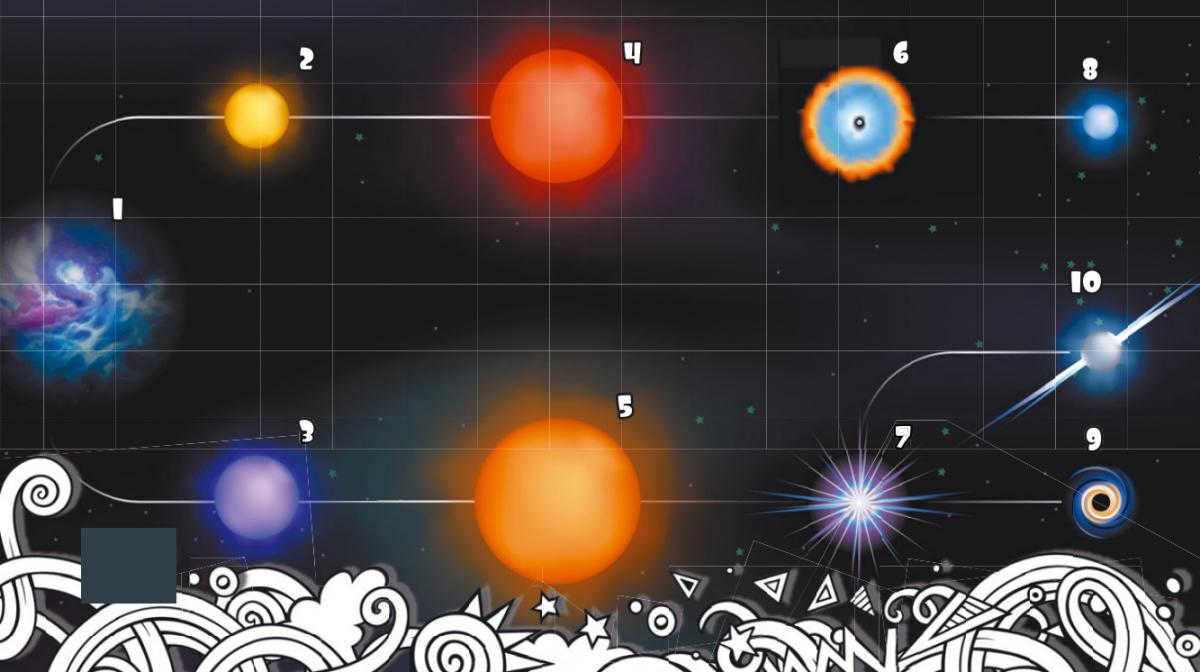
The start
Every single star commences its existence as a frigid, sparse cloud of interstellar gas that remains either after the occurrence of the Big Bang or following the detonation of another star (or stars). The primary impetus that constructs a star is the gravitational force.
Birth
The amorphous gaseous cloud gradually undergoes compression due to the force of gravity, causing an acceleration in the movement of particles within it. As the cloud’s center heats up, a new star known as a protostar is born through an eruption. Subsequently, the compression process of the cloud comes to a halt.
Development
On average, a star has a lifespan of 5-10 billion years. Eventually, it depletes its primary fuel source, hydrogen, and transitions to a reaction involving carbon and helium. However, the combustion temperature of carbon and helium is considerably higher than that of hydrogen, resulting in the star expanding in size and transforming into a red giant. Naturally, during this phase, the planets in close proximity to the red giant either disintegrate or become fiery spheres of rock.
The red giant phase of a star’s life is relatively short-lived. The process of helium and carbon burning is inherently unstable, resulting in the eventual destruction of the star. This cataclysmic event unleashes incredible force, completely obliterating the remnants of any planetary system that may have surrounded the star.
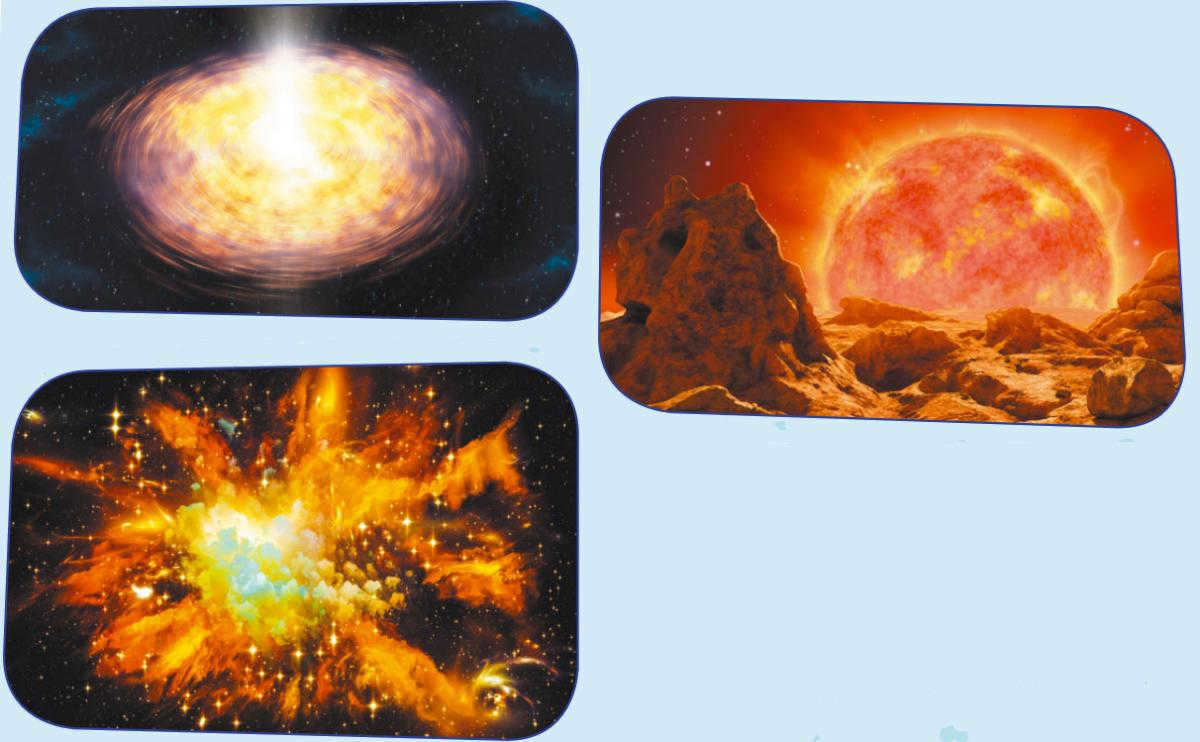

The destiny of the cosmos
Now that we have explored the origins and demise of stars, let us take a glimpse into the future of our vast and ever-expanding universe. Ever since the occurrence of the Big Bang (11), approximately 14 billion billion years have transpired (12). Assuming that the expansion continues at its current pace, nearby galaxies will eventually drift so far apart that they will become invisible after 100 billion years (13). After 100 trillion billion years, the majority of stars will have extinguished, leaving black holes as the dominant force in the universe (14). Eventually, the formation of new stars will cease altogether after a trillion trillion years. At this point, all the energy from the Big Bang will have dissipated, rendering the universe completely devoid of light (15).
The life cycle of stars is determined by their mass: low-mass stars eventually become white dwarfs, while high-mass stars end their lives through supernova explosions.
Although stars may appear immortal on a human time scale, they, like all natural phenomena, are born, live, and die. According to the widely accepted gas-dust cloud hypothesis, a star is born when an interstellar gas-dust cloud is gravitationally compressed. As the cloud contracts, it first forms a protostar. A protostar, its center’s temperature gradually rises until it reaches the threshold required for the rate of particle thermal motion to exceed the point where protons can overcome the macroscopic forces of mutual electrostatic repulsion (refer to Coulomb’s law) and engage in a fusion reaction (refer to Nuclear decay and fusion).
The core of the star undergoes a secondary combustion of helium, resulting in a significant release of energy. This energy causes the star to expand, to the point where the Sun’s envelope will reach beyond the orbit of Venus. Despite the expansion, the star’s total radiative energy remains relatively constant compared to its main phase. However, due to the larger surface area, the outer layer of the star cools and emits radiation in the red part of the spectrum. As a result, the star transforms into a red giant.
Stars that are larger than the Sun have a much more dramatic conclusion. Once the helium is depleted, the compression of their mass generates enough heat to raise the temperature of the core and shell to a level that triggers the next set of nucleosynthesis reactions – starting with carbon, then silicon, magnesium, and so on, as the nuclear masses increase. With each new reaction in the star’s core, the previous reaction continues in the star’s envelope. In fact, all the chemical elements that make up the Universe, up to iron, were created through nucleosynthesis in the dying stars of this kind. However, iron marks the limit; it is unable to sustain any further nuclear fusion or decay reactions at any temperature or pressure, as both its decay and the addition of more nucleons require an external energy input. Consequently, a massive star gradually accumulates an iron core within itself, which cannot be used as fuel for any subsequent nuclear reactions.
Following a massive explosion and fragmentation of stars with masses ranging from 10 to 30 times that of the Sun, a neutron star is formed through the ongoing gravitational collapse. The matter in the neutron star becomes compressed to the point where it begins to resist further compression, due to the pressure of degenerate neutrons. In other words, the neutrons, much like the electrons before them, start demanding a living space to accommodate them. This typically occurs when the star reaches a diameter of around 15 km. The outcome is a rapidly spinning neutron star that emits electromagnetic pulses at its rotational frequency, known as pulsars. Finally, if the core of the star exceeds 30 solar masses, nothing can prevent its continued gravitational collapse, resulting in the formation of a black hole following a supernova explosion.

In the 1920s, researchers in the field of astronomy made a groundbreaking revelation – the realization that the vast expanse of the universe was in a state of expansion. Fast forward to the 1990s, and further research led to the astonishing discovery that this expansion was not only continuing, but also accelerating.
Authorship of this content belongs to


Dmitry Vibe is a Doctor of Physical and Mathematical Sciences. He currently serves as the Head of the Department of Physics and Evolution of Stars at the Institute of Astronomy of the Russian Academy of Sciences.

It is not often pondered upon by individuals when gazing at the celestial sphere and perceiving the shimmering luminaries that these distant entities are actually perceived as they appeared in the remote past, spanning hundreds, thousands, or even millions of years ago.
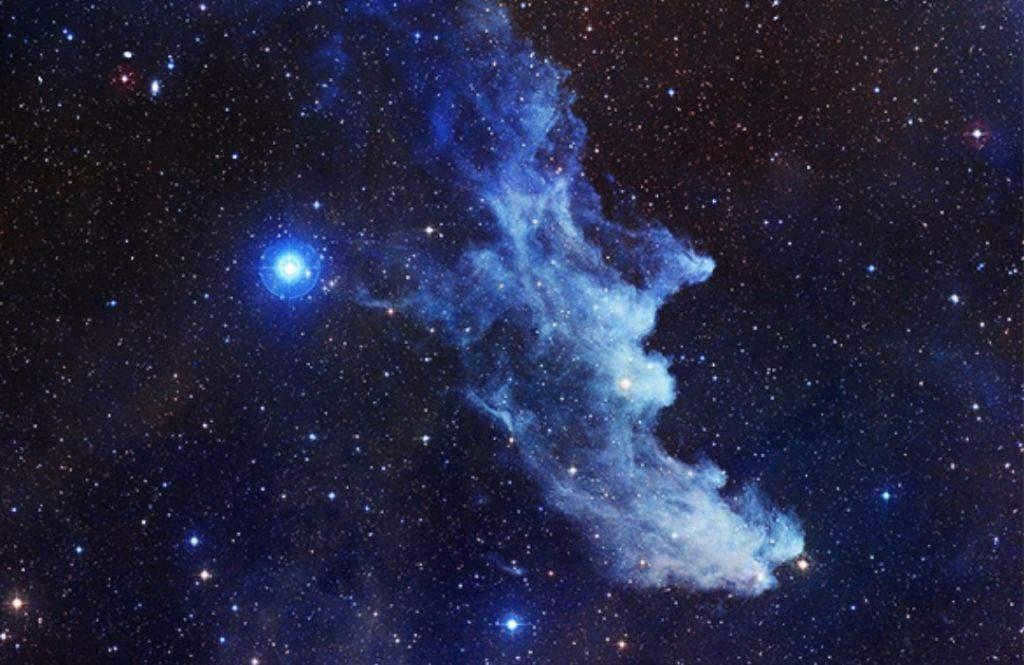
That is the duration of time it takes for photons to journey from a star to our planet. Numerous stars in the celestial sphere have already ceased to exist, however, we can still perceive their luminosity. Additionally, a number of stars that have already come into existence have not yet become visible in the night sky, as the photons are currently en route. Consequently, we must consider the processes of stellar birth and demise. Let’s explore this further.
Construction Material
In order for a star to be formed, a vast amount of hydrogen is required, as it is the most basic element in the entire universe. A hydrogen molecule is composed of only two atoms, each containing a nucleus with a single proton. Additionally, there exists a quantum cloud where a solitary electron can be found.
Following the Big Bang Event.
Hydrogen emerged as the initial element to arise in the aftermath of the Big Bang. The substance, comprised of protons, neutrons, electrons, and various other fundamental particles, was subjected to intense heat before gradually cooling down and consolidating over time.
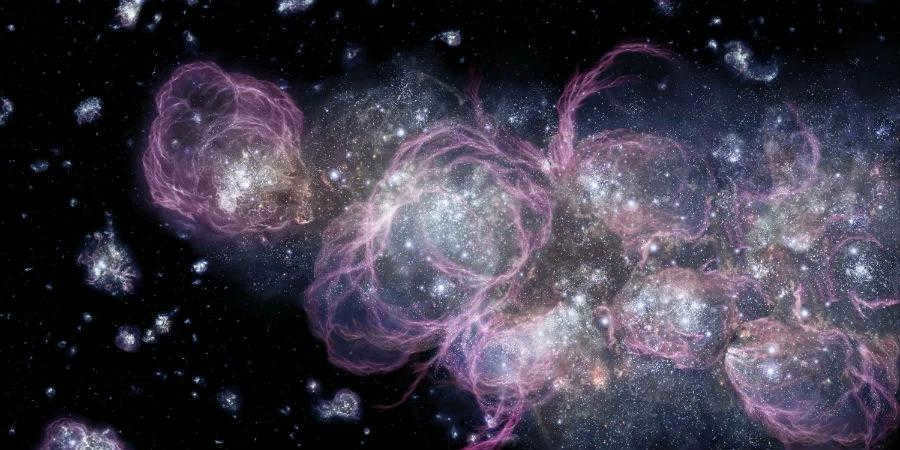
As the early Universe cooled down, massive amounts of hydrogen started to form. The decrease in temperature allowed electrons to combine with protons, giving rise to the first hydrogen molecules.
According to the current cosmological model, this process began a mere second after the Big Bang and lasted approximately three minutes. Astonishingly, such a brief period of time was sufficient for the Universe to noticeably cool down.
In its early stages, the Universe was composed of 75% hydrogen and 25% helium. Scientists have since identified a few more elements from the periodic table, but their presence was extremely minimal, accounting for only a fraction of a percent.
At the time of the universe’s birth, matter was evenly distributed throughout space. It is likely that this vast hydrogen cloud would have remained undisturbed in the darkness if not for quantum fluctuations, which introduce random variations in any given quantity.
Astronomical Cloud
Also known as a stellar nursery, an astronomical cloud is a specific type of interstellar cloud that has the necessary density and size for hydrogen molecules to form.
Remnants of astronomical clouds can still be observed today. These can be seen in the form of cosmic background radiation or interstellar nebulae that are rich in hydrogen and helium. It is within these stellar nurseries that stars begin their journey of life, when the gas density reaches incredibly high levels.
As the density of the molecular cloud increases, the temperature also rises. This causes the molecules to start rotating at a rapid pace. The density keeps on increasing, along with the rotation, resulting in collisions between hydrogen molecules. These collisions emit photons in the infrared spectrum, which then disperse into outer space.
Eventually, the molecular cloud undergoes a collapse, but centrifugal forces prevent the surrounding matter from completely collapsing. This process gives rise to a protoplanetary disk, which has the potential to create planets capable of sustaining life in the future.
The Formation of a Star
It takes approximately 50 million years for a gas cloud to come together and give birth to a protostar. This protostar is essentially a spinning plasma ball with incredible speed. At such high temperatures, hydrogen molecules cannot withstand the pressure and begin to collapse, forming individual atoms.
However, not all protostars have the necessary conditions to evolve into full-fledged stars. If the temperature in their interiors is insufficient to support thermonuclear fusion, they will instead become brown dwarfs. Over time, these brown dwarfs cool down and collapse within a few hundred million years. They have relatively small masses, ranging from 1% to 10% of the mass of the sun.
If the protostar remains sizable, the process of collapse will persist. The internal temperature will continue to increase until the energy of the hydrogen atoms reaches a crucial threshold. At this juncture, a spontaneous thermonuclear reaction will be initiated. The plasma sphere begins to emit thermal energy, halting the collapse, and voila! Our star is born!
The Life Cycle of a Star: From Birth to Supernova
As stars undergo thermonuclear reactions in their cores, they transform hydrogen into helium, fueling their existence much like our own Sun. However, this process cannot last indefinitely. Eventually, the star’s hydrogen reserves will be depleted, marking the end of its current phase. Although the core will continue to sustain nuclear reactions in its outer shell, the star’s fate is sealed.
As the core becomes increasingly saturated with helium, it begins to expand and grow in mass at an alarming rate. This gravitational collapse triggers a dramatic transformation, causing the star to evolve into a red giant. Once again, thermonuclear reactions reignite within the star, converting helium into heavier elements such as carbon, oxygen, silicon, and ultimately iron.
If a dying star is large enough, it can give birth to a black hole. What exactly is a black hole and what do scientists know about it? We have discussed this topic in detail HERE.
Everything in the universe is constantly changing. Every cycle begins with birth, followed by growth, and eventually ends with death. Stars, of course, have their own unique way of going through these cycles. Let’s not forget that their lifespan is much longer, measured in millions and billions of years. Additionally, their deaths have significant consequences. So, what does the life cycle of a star look like?
Molecular clouds
Let’s begin with the formation of a star. Envision a vast expanse of frigid molecular gas, peacefully existing in the cosmos without any alteration. However, an unexpected occurrence disrupts this tranquility, whether it be a nearby supernova explosion or a collision with another cloud. This disruption triggers a process of upheaval. The cloud fragments into smaller pieces, each one drawing itself inward. As you can observe, all of these fragments are in the process of evolving into stars. Gravity intensifies, leading to an increase in temperature, while the accumulated momentum sustains the ongoing process. The diagram below provides a clear visualization of the stellar cycle, including the stages of development, potential transformations, and the eventual demise of celestial bodies, accompanied by photographs.
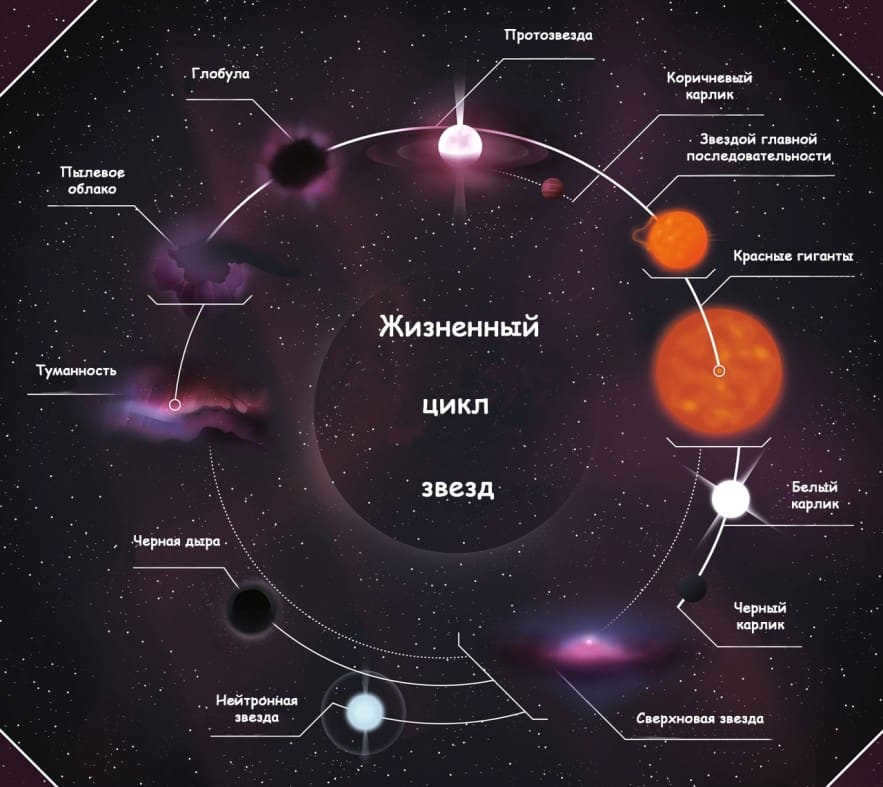
Protostar
When matter condenses and collapses due to gravity, it becomes denser and heats up, leading to the formation of a protostar. The protostar is surrounded by a disk of material, some of which is drawn towards the object, increasing its mass. The remaining debris will come together to form a planetary system. The subsequent evolution of the star is determined by its mass.
T of Taurus
When matter collides with the star, a massive amount of energy is unleashed. The stellar phase that follows is designated after its archetype – T Taurus. This variable star is situated 600 light-years distant (in close proximity to the Hyades cluster).
It has the capacity to attain significant luminosity due to the breakdown and subsequent release of energy from the matter. However, the central region lacks the necessary temperature to sustain nuclear fusion. This stage endures for a period of 100 million years.
The primary sequence
At a specific moment, the temperature of the celestial object increases to the necessary level, triggering nuclear fusion. All stars experience this phase. Hydrogen undergoes a transformation into helium, resulting in the release of a vast amount of thermal energy and energy.
This energy is emitted as gamma rays, but due to the star’s slow movement, it diminishes in wavelength. The light pushes outward and counters the force of gravity. One can envision this as the creation of a perfect balance.
How long will the star remain in the primary sequence? It depends on the star’s mass. Red dwarfs (half the mass of the Sun) can deplete their fuel reserves for hundreds of billions (trillions) of years. Medium-sized stars (like the Sun) have a lifespan of 10-15 billion years. However, the largest stars can endure for billions or even millions of years. Consult the diagram to observe the evolution and demise of stars of various classes.
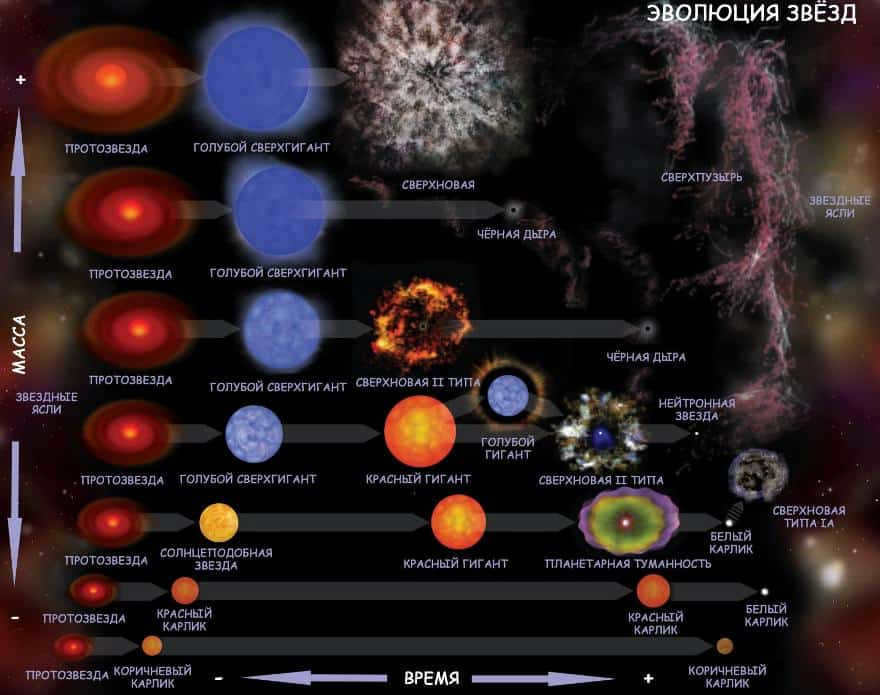
Red Giant
When the fusion process occurs, the hydrogen supply diminishes and helium accumulates. Once all the hydrogen has been depleted, the core reactions halt, leading to the star’s contraction under the influence of gravity. The hydrogen shell surrounding the core becomes hotter and ignites, causing the star to expand by a factor of 1000-10000. Eventually, our Sun will also undergo this transformation, enlarging to the size of Earth’s orbit.
As the temperature and pressure reach their peak, helium undergoes fusion to form carbon. At this stage, the star contracts and ceases to be a red giant. In the case of higher mass stars, other heavier elements will be burned.
White dwarf
A white dwarf is formed when a star with a mass similar to that of the sun exhausts its nuclear fuel and is no longer able to fuse carbon. Instead, the star undergoes a process called helium burning, where the outer layers are expelled and a dense core remains. This core, known as a white dwarf, is incredibly hot initially, but over time it gradually cools down. It can take hundreds of billions of years for a white dwarf to reach a temperature where it is no longer emitting significant amounts of light or heat.
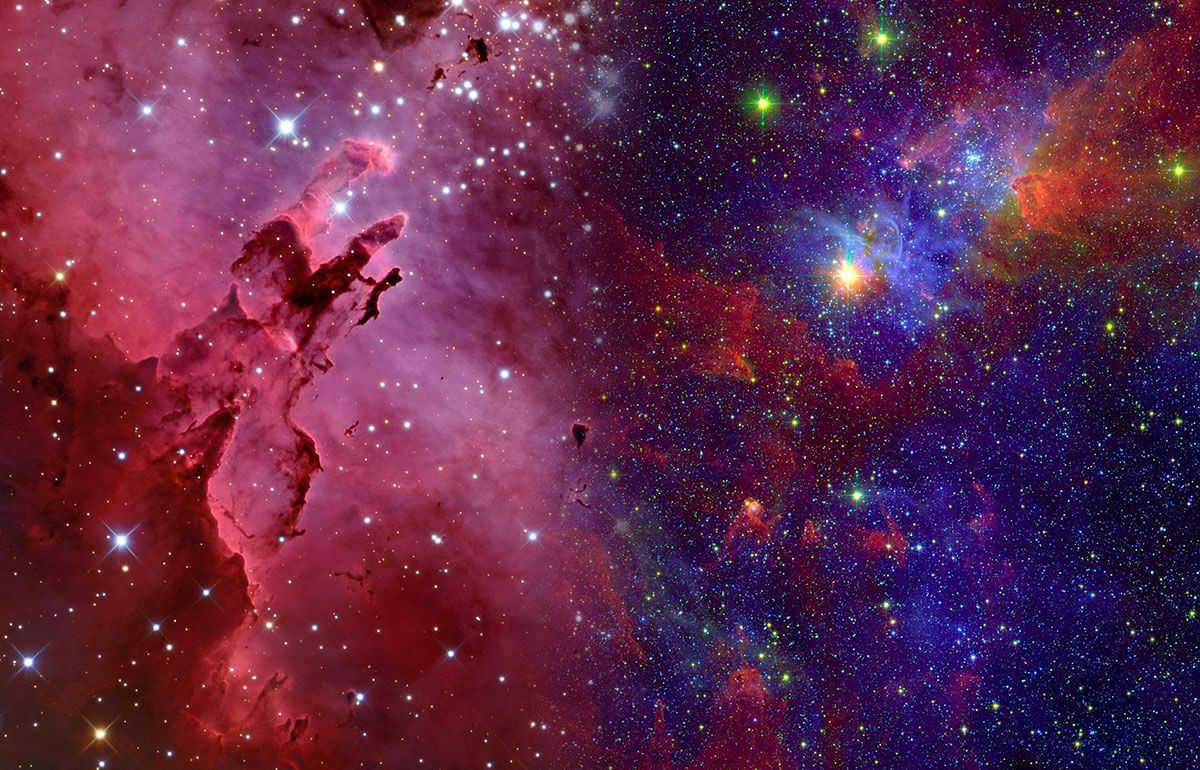

12 260
On a moonless night, when the sky is dark and clear, you can gaze up and see a breathtaking sight. Thousands of stars are spread out across the sky, forming beautiful constellations. These stars emit light that has traveled vast distances to reach our planet. But have you ever wondered what exactly stars are? How far away are they from us? Are all stars the same? And could there be other planets orbiting around them? In this article, we will delve into the captivating world of stars. We will examine their characteristics, different types, their formation process, and ultimately, how they meet their end.
Stars and their characteristics
Stars are immense luminous spheres made up of hot gases, predominantly hydrogen and helium. While some stars are relatively close (the closest 30 stars are within 40 parsecs), others are located far away. Astronomers can determine distance using a technique called parallax, which involves measuring the change in a star’s position in the sky at different times throughout the year.
There are various types of stars in the sky. Some are solitary, while others have companions in the form of double stars. Additionally, there are large clusters that contain thousands or millions of stars.
Not all stars are identical. They differ in terms of size, brightness, temperature, and color. Furthermore, stars possess numerous characteristics that can be measured by analyzing the light they emit:
- Temperature
- Spectrum or wavelength of emitted light
- Brightness
- Luminosity
- dimension (radius)
- weight
- movement (towards or away from us, rotational speed)
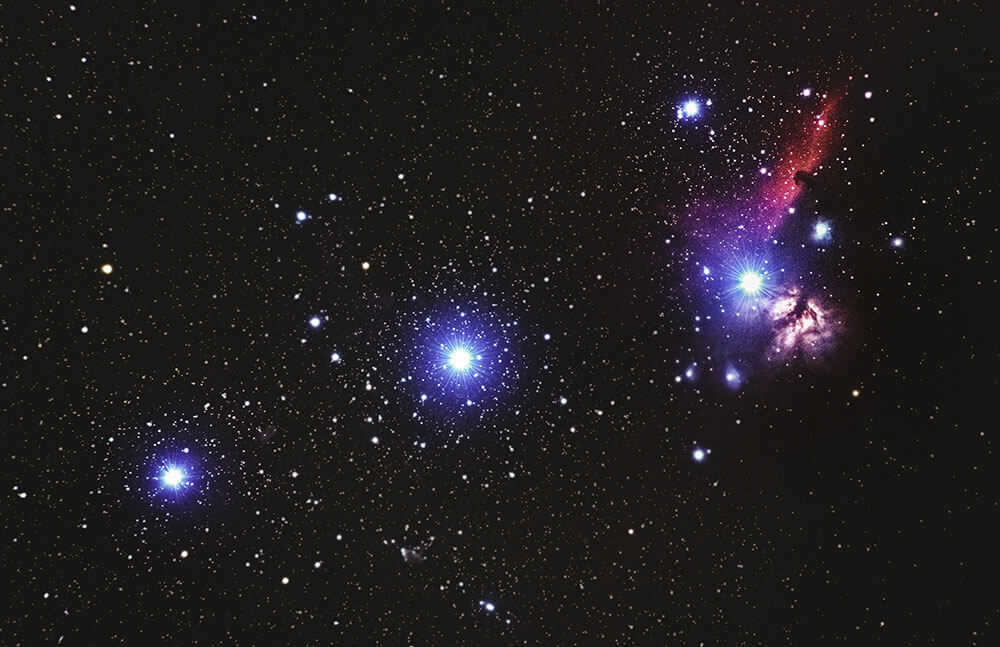
The Flame Nebula and Horsehead Nebula located in the belt of Orion constellation.
If you are interested in the study of stars, it is important to familiarize yourself with the following terms:
- Absolute magnitude – the apparent magnitude of a star if it were 10 parsecs away from Earth.
- Apparent magnitude – the brightness of a star as observed from Earth.
Luminosity – the total amount of energy emitted by a star per second. - Parsec – a unit of distance measurement equal to 3.3 light-years or 33 trillion kilometers.
Light year – a unit of distance measurement equal to 10 trillion kilometers. - Spectrum – the range of different wavelengths of light emitted by a star.
- Solar mass – the mass of the Sun, which is approximately 1.99 x 10^30 kg or 330,000 times the mass of Earth.
Temperature and Light Spectrum
The temperature of a star can be determined by observing the color of light it emits. Similar to how red glowing coals are cooler than white coals in a charcoal grill, a red star is cooler than a yellow star, which is cooler than a blue or white star. By analyzing the strongest color or wavelength of light emitted by a star, its temperature can be calculated using the formula: temperature in degrees Kelvin = 3 x 10 6 / wavelength in nanometers.
Furthermore, the spectrum of a star can provide information about the chemical elements present in it. Different elements, such as hydrogen, helium, carbon, and calcium, absorb light at various wavelengths, allowing scientists to identify their presence in a star.
Brightness, luminosity, and radiance
The concepts of brightness, luminosity, and radiance are closely related but have distinct meanings in the field of physics and optics. Brightness refers to the perceived intensity of light, while luminosity refers to the total amount of light emitted by a source. Radiance, on the other hand, is a measure of the amount of light emitted or reflected by a surface per unit solid angle per unit projected area. In simpler terms, brightness is what we perceive with our eyes, luminosity is the actual amount of light, and radiance is how the light is distributed in space. Understanding these concepts is essential for various applications in science and technology, including lighting design, photography, and astronomy.
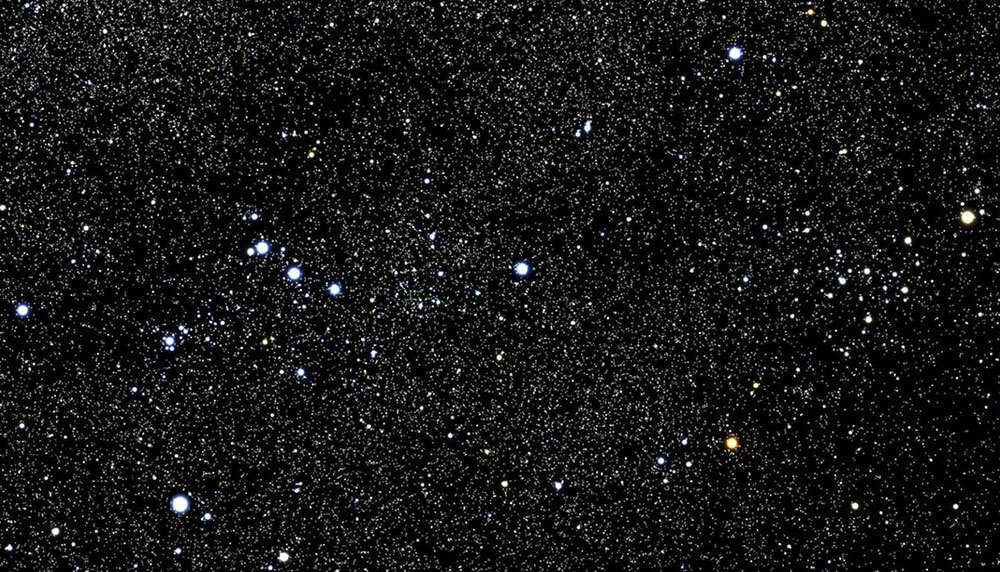
When observing the night sky, one can notice variations in the brightness of stars, which is illustrated in this image of the Orion constellation.
Two key factors contribute to the brightness of a star:
- luminosity – the amount of energy it emits
- distance – its proximity to us
Comparing a searchlight to a flashlight, the former emits a larger amount of light, thus appearing brighter. However, if the searchlight is positioned 8 kilometers away, its brightness diminishes due to the inverse square law, where the intensity of light decreases with the square of the distance. Consequently, a spotlight located 8 kilometers away can appear as bright as a flashlight positioned only 15 centimeters away. The same principle applies to stars.
Furthermore, by analyzing the Doppler shift, we can determine the direction of a star’s movement. If the star’s spectrum is shifted towards the blue end, it means the star is moving towards us. On the other hand, if the spectrum is shifted towards the red end, it indicates that the star is moving away from us. Moreover, the Doppler shift of a star’s spectrum can also be utilized to calculate the rotational speed of a star if it is rotating on its axis.
Hence, it is apparent that the light emitted by a star provides us with valuable information. Additionally, modern amateur astronomers have access to various tools like large telescopes, CCDs, and spectroscopes at a relatively affordable price.
Consequently, amateurs are now capable of conducting the same measurements and stellar studies that were previously limited to professionals.

Comparing the triple star system Alpha Centauri with the Sun
Stars classification: combining properties
In the early 1900s, two astronomers, Annie Jump Cannon and Cecilia Payne, classified stars’ spectra based on their temperature. Cannon performed the classification, and later Payne explained that a star’s spectral class is determined by its temperature.
In 1912, Einar Hertzsprung, a Danish astronomer, and Henry Norris Russell, an American astronomer, independently created plots showing the correlation between temperature and luminosity for numerous stars. Their research revealed an unexpected finding: a majority of stars are positioned along a continuous diagonal curve known as the main sequence. This sequence consists of hot, bright stars located in the upper left corner and cool, dim stars situated in the lower right corner. Beyond the main sequence, there are cool, luminous stars found in the upper right corner and hot, faint stars present in the lower left corner.

The size of the stars increases as you move diagonally from the bottom left to the top right:
- Sirius B has a radius of 0.01 times that of the Sun
- The Sun has a radius of 1 solar radius
- Spica has a radius of 10 times that of the Sun
- Rigel has a radius of 100 times that of the Sun
- Betelgeuse has a radius of 1000 times that of the Sun.
The stars on the main sequence range from the largest (about 30 times the mass of the Sun) in the top left corner to the smallest (about 0.1 times the mass of the Sun) in the bottom right. Our sun is in the middle.
White dwarfs are not classified because their stellar spectra are different from those of most other stars.
The existence of a star
As previously stated, stars are expansive masses of gas. Fresh stars emerge from immense, frigid (10 degrees Kelvin) accumulations of dust and gas (primarily hydrogen) that reside amidst preexisting stars within a galaxy.
Typically, a gravitational disruption of some sort transpires within the accumulation, such as the traversal of a neighboring star or a shock wave produced by a detonating supernova. Consequently, clusters develop within the accumulation.
The clumps of matter collapse inwards, drawing the gas towards them through the force of gravity. This causes the clumps to become compressed and heated.
Eventually, the clumps start to rotate and flatten, forming a disk shape.
The disk continues to spin faster, attracting more gas and dust and causing them to heat up.
After approximately a million years, a small, intensely hot core (with a temperature of around 1500 degrees Kelvin) forms at the center of the disk, known as a protostar.
As gas and dust continue to fall into the disk, they transfer energy to the protostar, causing it to heat up even further.
Once the temperature of the protostar reaches roughly 7 million degrees Kelvin, the hydrogen within it begins to undergo fusion, transforming into helium and releasing energy in the process.
Due to the force of gravity being stronger than the outward pressure from nuclear fusion, material continues to fall into the young star for millions of years. As a result, the internal temperature of the protostar continues to rise.
If a sufficient amount of mass (0.1 solar mass or greater) were to enter the protostar and the temperature were to rise to a point where fusion could be sustained, then the protostar would undergo a significant expulsion of gas in the form of a bipolar flow. On the other hand, if the mass were insufficient, the protostar would not proceed to form into a star, but instead would become a brown dwarf.
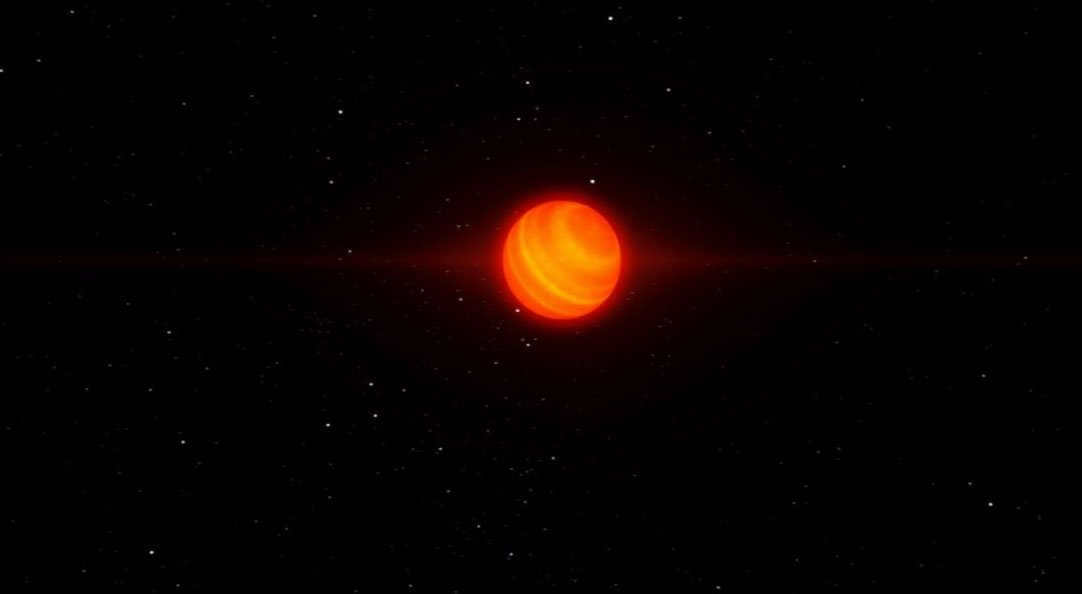
The expulsion of gas and dust from the young star is facilitated by the bipolar flow. It is possible for some of this gas and dust to eventually come together and form planets.
The young star is currently in a stable state where the external pressure from hydrogen fusion is equal to the internal gravitational pull. It has now entered the main sequence, and its position on the main sequence depends on its mass.
Now that the star is stable, it consists of the same components as our Sun:
- the core, where nuclear fusion reactions occur.
- the radiative zone, where energy is carried away from the core by photons.
- the convective zone, where energy is transported to the surface by convection currents.
Existence on the primary line
Stars on the primary line undergo combustion by combining hydrogen with helium. The bigger ones have greater core temperatures compared to smaller stars. As a result, they consume hydrogen fuel in the core at a faster rate, while smaller stars do so more gradually. The duration that stars spend on the primary line relies on the pace at which hydrogen is utilized. This is why massive stars have shorter lifespans (the sun will exist for approximately 10 billion years). The outcome when the hydrogen in the core vanishes is contingent upon the mass of the star.
The Demise of a Celestial Body
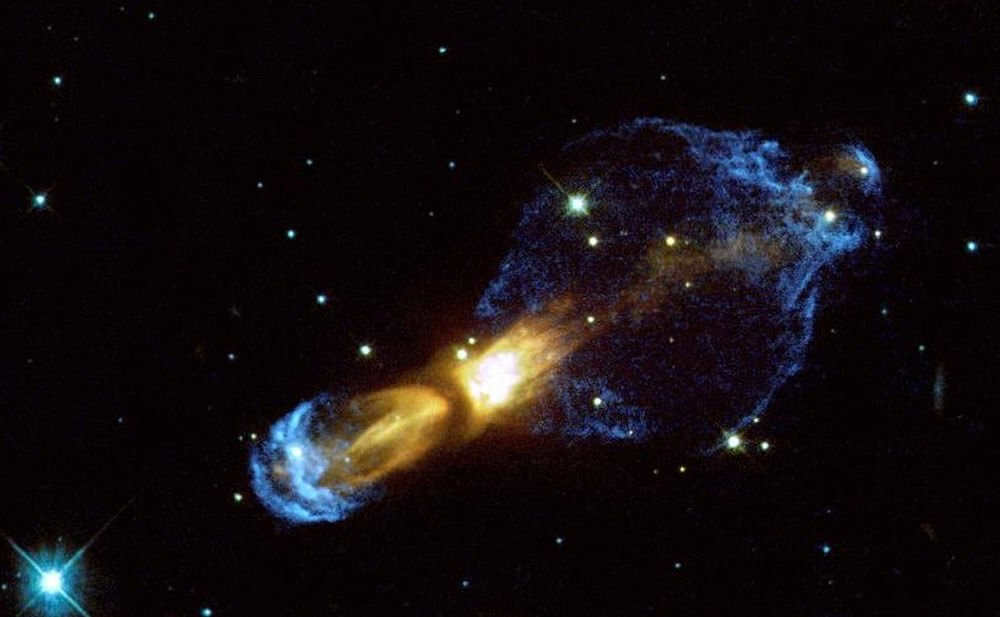
The protoplanetary nebula known as the “Rotten Egg” is a fascinating cosmic phenomenon.
After several billion years of existence, every star eventually reaches the end of its life cycle. However, the manner in which a star meets its demise varies depending on its specific characteristics.
Stars similar to our sun
Once the hydrogen fuel in the core is depleted, gravity causes the core to contract. Nevertheless, some hydrogen fusion still takes place in the outer layers. As the core continues to shrink, it generates intense heat, which in turn causes the upper layers of the star to expand. This expansion leads to an increase in the star’s radius, transforming it into a majestic red giant.
The red giant sun will have a radius slightly larger than the Earth’s orbit. Eventually, the core will reach a high enough temperature for helium to fuse and form carbon. Once the helium fuel is depleted, the core will expand and cool down. This expansion will cause the outer layers to expand as well, resulting in the ejection of material that will gather around the dying star and create a planetary nebula. Ultimately, the core will transform into a white dwarf and eventually a black dwarf. This entire process will span billions of years.
Stars that are more massive than the Sun
When these stars exhaust their hydrogen fuel, they also convert helium into carbon, similar to the Sun. However, due to their greater mass, they have enough material to continue burning carbon and produce heavier elements like oxygen, neon, silicon, magnesium, sulfur, and iron.
After the nucleus transforms into iron, it becomes incapable of undergoing fusion. As a result, the star succumbs to its own gravitational pull, causing the iron core to heat up. The density of the nucleus increases to the point where protons and electrons combine, forming neutrons. In a matter of moments, the Earth-sized iron core diminishes to a neutron core with a radius of approximately 10 kilometers. The surrounding layers of the star collapse onto the neutron core, leading to further compression.
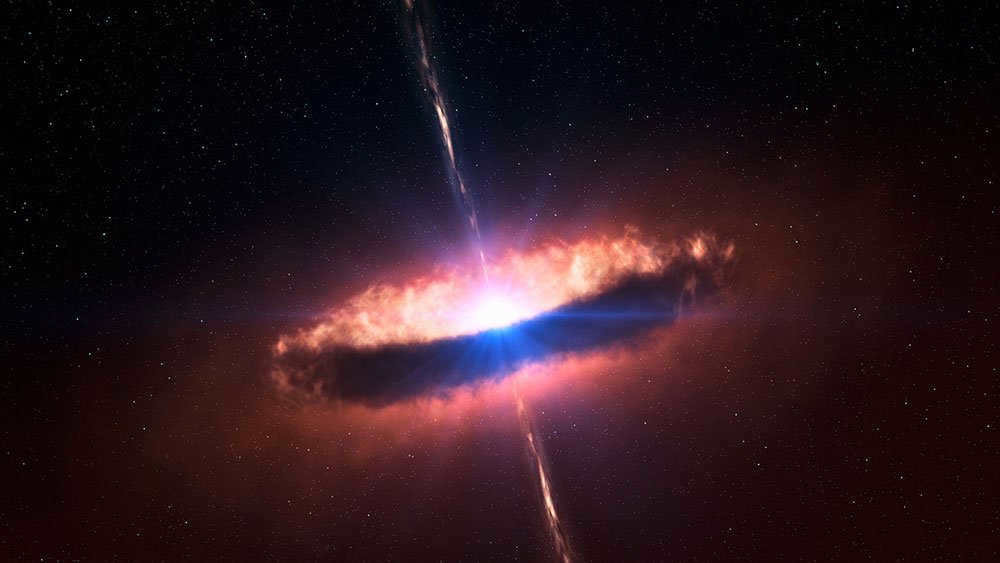
The central part of a star becomes extremely hot, reaching temperatures in the billions of degrees, and then undergoes a massive explosion known as a supernova. This explosion releases vast quantities of energy and matter out into the surrounding space. The powerful shock wave produced by the supernova can trigger the formation of new stars in nearby interstellar clouds. The leftover debris from the star’s core can either collapse into a neutron star or become a black hole, with the outcome depending on the original star’s mass.
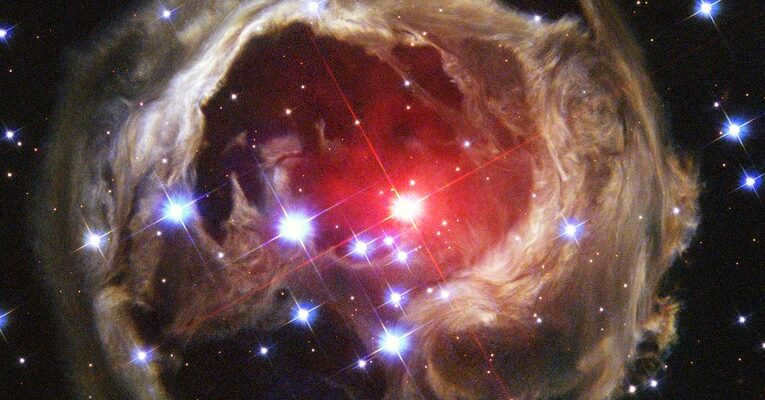
Unveil the marvels of the cosmos: the life cycle of celestial bodies. Embark on an intriguing odyssey as you delve into this illuminating astronomy piece, which chronicles the extraordinary passage of stars from inception to demise. Dive into the various phases that govern a star’s existence and the intricate mechanisms that sculpt the very fabric of the universe. Acquire a profound comprehension of the profound impact stars wield upon the cosmic realm and unlock the enigmatic enigmas they harbor.
Stars are the most awe-inspiring entities in the cosmos. Since the dawn of human civilization, they have evoked a sense of wonder and reverence. Their brilliance, magnitude and vast distance from our planet have perpetually imbued them with an air of unattainability and enigma. Nevertheless, astronomers have made remarkable strides in comprehending the life cycles of these celestial bodies, despite the immensity of space and the intricate nature of stars. In this article, we delve into the origins, demise, and various other facets of stars, elucidating the different phases of their evolution and the profound impact they have on the surrounding universe.
The origins of stars
The life cycle of a star commences with its inception. The process of star formation is a intricate one, triggered by the collapse of a molecular cloud. This collapse results in the creation of dense nuclei which act as the building blocks for new stars. As these cores are compressed and condensed, they generate heat and release gravitational energy. This energy propels the development of the star’s core and the encompassing disk of gas and dust that will ultimately give rise to the star’s planets.
Collapse is a swift contraction that induces an object to condense under the influence of gravitational forces. Collapse is the fundamental mechanism through which objects in the universe take shape.
The Journey of Stars
A star’s journey is characterized by a series of phases, each dictated by the quantity of hydrogen present in the star’s core. During the main sequence phase, the star generates energy and radiance via nuclear fusion, a process that transforms hydrogen into helium. The duration of this phase is contingent upon the star’s magnitude and can span billions of years.
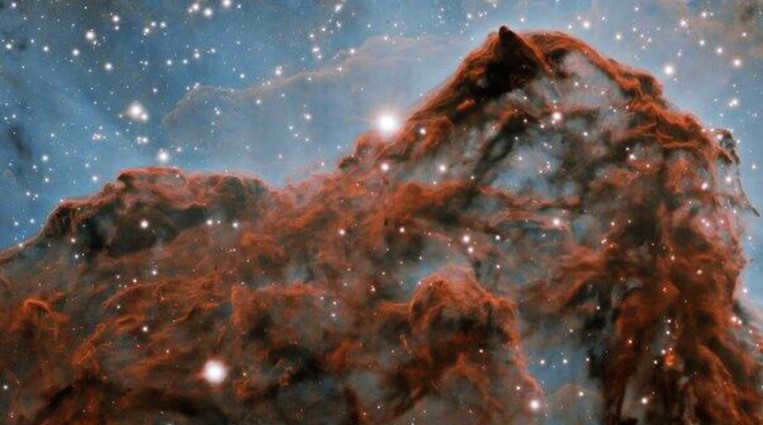
Over time, the hydrogen supply within the core of the star gradually depletes, leading to a decrease in temperature and size. As the core becomes more compact and reaches a high enough temperature, it undergoes helium fusion, resulting in the formation of heavier elements. This process continues until the core primarily consists of iron, causing fusion to cease.
Main Sequence
The main sequence is the phase in the life of a star where it undergoes the fusion of hydrogen into helium. Our Sun is currently in this phase, and it is known as the most stable and longest stage in a star’s lifecycle. This phase is characterized by the star’s highest production of energy and light, making it the brightest period in a star’s life.
During the main sequence, the star’s core will continue to heat up and the pressure within it will increase. As a result, the outer layers of the star will expand, causing the star to grow in size. However, the star will maintain a consistent temperature, enabling it to remain in this phase for billions of years.
When a star exhausts its hydrogen fuel, it will eventually undergo a decrease in core pressure, leading to contraction and the ignition of helium in the core.
Red giant
Once a star starts to deplete its hydrogen fuel, it enters the red giant phase. In this phase, the core becomes compressed and heated, causing the outer layers of the star to expand and cool. As a result, the star emits a red glow, hence the name.
The red giant phase is a relatively short-lived stage in a star’s life, lasting only a few hundred million years. During this phase, the star will continue to burn its remaining hydrogen fuel, while also initiating the fusion of heavier elements like helium and carbon.

The red giant phase is a crucial stage in the life cycle of a star, as it determines the star’s future fate. Depending on its size and mass, the star may either evolve into a white dwarf or experience a supernova event.
The Demise of Stars
The culmination of a star’s life cycle is marked by its demise. The fate of a star is determined by its mass. Smaller stars like the Sun will eventually shed their outer layers, leaving behind a compact and slowly cooling object known as a white dwarf.
On the other hand, larger stars will undergo a powerful explosion called a supernova. This explosive event releases immense energy, causing the star’s outer layers to be expelled into space. What remains is either a neutron star or a black hole, both of which possess extraordinary density and gravitational fields.
The demise of a celestial body has a profound impact on the cosmos. The elements forged within the core of the star will disperse throughout space, serving as the building blocks for future generations of celestial bodies and planets. The release of energy resulting from the celestial body’s demise also triggers the formation of new stars, perpetuating the eternal cycle of birth, life, and death within the realm of stars.
The expiration of a celestial body represents the ultimate stage of its life cycle. Multiple factors, such as its dimensions, mass, and remaining fuel, contribute to the determination of a celestial body’s demise.
If a celestial body is small in size and possesses a meager mass, it will gradually transform into a white dwarf, gradually dissipating. This form of expiration is relatively serene for the celestial body, ultimately leading to its transformation into a white dwarf planet.
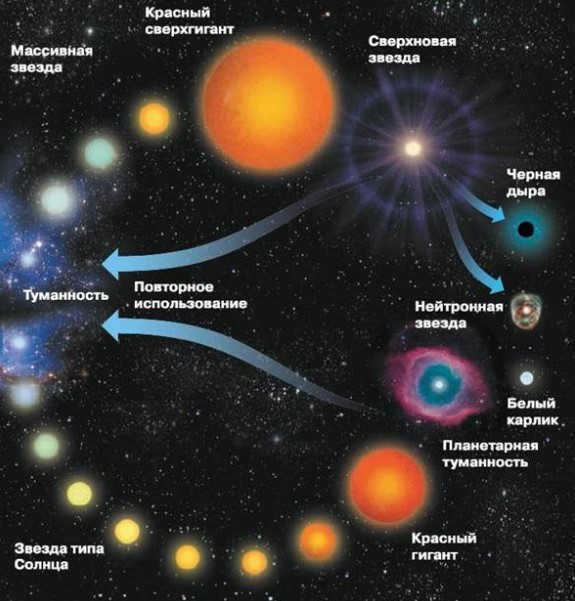
However, in the event that the star possesses a greater size and mass, it shall undergo a supernova. This occurrence constitutes the violent demise of a star as it detonates with such an immense force that it overshadows whole galaxies. The explosion will subsequently disperse heavy elements, such as iron, carbon, and nitrogen, which will ultimately coalesce to form novel stars and planets.
Once a star has fully depleted its nuclear fuel, it must inevitably meet its demise. The life cycle of a star culminates with its death, and the manner in which a star perishes hinges upon its mass.
Low-mass stars
Red dwarfs, which are also referred to as low-mass stars, undergo a relatively gentle death. As a star exhausts its fuel, it undergoes a gradual cooling and shrinking process, ultimately transforming into a white dwarf.
White dwarfs are compact celestial bodies that have a high density and emit minimal amounts of light and heat. Over time, they will continue to cool down until they dissolve into the depths of the universe, becoming black dwarfs – stars that no longer radiate light or heat.
Stars with intermediate mass
Stars with intermediate mass, ranging from 1 to 8 times the mass of the Sun, will ultimately transform into white dwarfs. However, before reaching this stage, they will go through a more dramatic demise called a planetary nebula. During this process, the outer layers of the star will be expelled into space, creating a stunning nebula, while the core itself will evolve into a white dwarf.
Stars with a significant mass, which is 8 times greater than the mass of the Sun, will undergo a much more violent demise. These stars will conclude their existence in a colossal supernova blast, liberating immense amounts of energy and matter into the surrounding cosmos. Depending on the star’s mass prior to the explosion, the remnants of the supernova may consist of either a neutron star or a black hole.
The consequences of a star’s demise on its surroundings can be tremendous, influencing the evolution of galaxies and the formation of fresh stars. Elements generated during a star’s death, such as carbon, oxygen, and iron, will eventually serve as the foundation for future generations of stars and planets.





